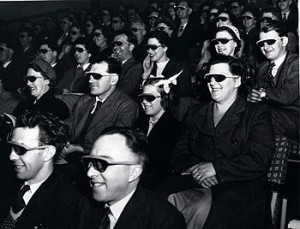Stop, listen… look!
After all the excitement of last week’s guest post from Kevin Malone, it’s back to me for the first post of February…
Earlier this week, I made a trip to Nottingham’s Royal Concert Hall to give a pre-concert talk for a performance of Brahms’s Fourth Symphony by Sinfonia Viva. Any excuse to read a little more, learn a little more, enthuse publicly a little more, about Brahms is always welcome – so off I set to the library to collect appropriate quotations from letters and reminiscences, and remind myself of recent articles and score prefaces.
Now, I shan’t bore you with all the details here, but one thing that struck me as particularly interesting was Brahms’s implication that the only thing that made the Scherzo tolerable was its unusual orchestration. It would ‘be something of a spectacle, with its three timpani, triangle and piccolo,’ he wrote. And so I made a point of mentioning this – and the fact that the poor triangle player has to sit there in patient silence through the first and second movements, count madly and play enthusiastically in the third, and then twiddle their thumbs through the finale. It is something, one might say, to watch out for.
Except a surprisingly large number of people don’t seem to consider concert attendance to be any kind of spectator sport at all. They go for the music, for the privilege of being in the room with it. But by ‘it’, they generally mean the piece rather than the (in this case rather large) group of people who are sweating away to make the sounds they want to hear. They may even go for a specific performer: but to hear them, not to look at them. Indeed, at the end of the concert, I got chatting to an audience member who was extolling the virtues of a particular choral performance they had attended, and in the list of excellent features of this concert, they specifically mentioned the fact that you couldn’t see the singers who were in the room with you.
This ‘don’t look’ mentality has always struck me as extremely odd, particularly given how visual modern culture is. And, indeed, the emphasis placed on the visual aspects of certain kinds of performance. Take opera or music theatre, as the most obvious examples. Many’s the time I’ve been frustrated by radio reviews of new opera productions in which the lion’s share of the airtime is given over to a critique of costumes, sets, scenarios, and just a few minutes at the end squeezed in to tell you if the singing and playing is any good. Or period instrument ensembles, where the energy and grace of the players’ gestures conveys the spirit of the dance, or the elegance of a melody, as you hear it. (As in the fabulous 2013 Proms performance by Les Siècles, which I was lucky enough to see – everything from Lully to Stravinsky on period instruments, with tremendous energy and flair from conductor and players alike.) Or contemporary ensembles, who regularly perform pieces in which physical gesture plays a major role, from scored page turns in string quartets to musicians moving as they play; or the curious sight of performers playing furniture in John Cage’s Living Room Music; or Kurtág’s wickedly funny parody of Tchaikovsky’s First Piano Concerto, in which the joke is on the parodying of the pianist’s movements in the opening of the Tchaikovsky.
So why is it that orchestral and choral concerts of what we might broadly call ‘standard’ repertoire (sorry for the generalization) are all about listening, and not looking? Here, I have no answer. But if you’re going to pay good money to attend a live performance, I implore you not to act, whilst there, as if you have your eyes shut. How it looks, how the performers use gesture and posture and facial expressions to communicate, is part of the performance. Think of the string quartets who raise their bows in triumphant arcs at the end of the piece. Think of the pianist who crouches forward and caresses the keys as if they are made of something infinitely fragile. They aren’t doing that for their health. They’re doing it because it means something to them, communicates something of their understanding of the piece. So raise your eyes! I have extremely fond memories of an orchestral concert at the Barbican, many years ago, in which a little girl sitting right at the front witnessed someone playing the trombone for the first time. In sheer delight (and utter silence), she jumped up and started mimicking the trombonist’s movement of his slide as he played. What a joy it was. I hope it inspired her to have trombone lessons. I hope than when she, in her turn, is sitting on the stage of the Barbican and we are watching her, we are really watching her. And that just maybe, another little girl or boy is sat in the front row, thinking in wonder of the music they hear, and the players they see.

